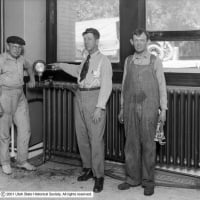Welcome! Here are the website rules, as well as some tips for using this forum.
Need to contact us? Visit https://heatinghelp.com/contact-us/.
Click here to Find a Contractor in your area.
If our community has helped you, please consider making a contribution to support this website. Thanks!
Setting up steam heat in multifamily with 1 furnace?
Options
Dina
Member Posts: 2
We currently have 1 furnace and 1 water heater for 2 units in a single pipe steam system. The system runs on oil. We would like to keep the steam heat and wonder if it is possible to keep 1 furnace and make 2 zones or do we have to separate each unit with its own furnace? If we should separate the units, what is the best way to go about this?
0
Comments
-
First, you have a boiler. If you are trying to control the spaces indepently, you need TRVs on each radiator. If you want to separate the billing, that is done by EDR values.
TimJust a guy running some pipes.0 -
Thanks - we've thought about TRV's as we currently pay for the heat for both units and thought this might be a way to keep the heat consistent for all of the rooms in both apartments. However, we do want to eventually have the tenants responsible for their own heat and thought the only way to do this is to have 2 separate heating systems. (Currently each apartment has it's own thermostat hooked up, which we've found the hard way does NOT work and the heat is constantly running). In the meantime we weren't sure the expense of TRV's would be worth the investment if we were only going to rely on them for a couple of years. Do TRV's get clogged up like other valves and need to be replaced every couple years?
As for EDR's, I don't understand how we'd use these values to separate the heat. I know they give a measure of how much heat each radiator gives off - how do I correlate that into separating the billing for each apartment?
Thanks for your help!
0 -
Here in Utah you can figure out the EDR for each seperate unit and use that info to figure the percentage of heat, or gas, each unit uses and divide the bill accordingly. The output of the rads never changes. If a rad is shut off or a TRV used, the savings that creates is spread out over both units. TRV's do not usually clog, and can be a sensor on the valve or a remote stat with a small capilary tube. If you use danfoss or a major name, you will always be able to find parts in the future.
TimJust a guy running some pipes.1
This discussion has been closed.
Categories
- All Categories
- 87.3K THE MAIN WALL
- 3.2K A-C, Heat Pumps & Refrigeration
- 61 Biomass
- 429 Carbon Monoxide Awareness
- 120 Chimneys & Flues
- 2.1K Domestic Hot Water
- 5.8K Gas Heating
- 115 Geothermal
- 166 Indoor-Air Quality
- 3.7K Oil Heating
- 77 Pipe Deterioration
- 1K Plumbing
- 6.5K Radiant Heating
- 395 Solar
- 15.7K Strictly Steam
- 3.4K Thermostats and Controls
- 56 Water Quality
- 51 Industry Classes
- 50 Job Opportunities
- 18 Recall Announcements
